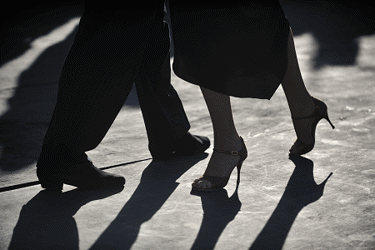Shall We (Patent) Dance? — Key Considerations For Biosimilar Applicants
By Limin Zheng, Ph.D., GCA Law Partners LLP

The Biologics Price Competition and Innovation Act of 2009 (BPCIA), enacted in March 2010, provides for an elaborate process of information exchange — known as the “patent dance” — between a biosimilar applicant and a reference product sponsor (RPS) intended to resolve potential patent disputes in an orderly and expeditious fashion. The biosimilar applicant initiates the dance by providing to the RPS, within 20 days of FDA’s acceptance of the abbreviated biologics license application (aBLA), “a copy of the application ... and such other information that describes the process or processes used to manufacture the biological product that is the subject of such application.” The dance then proceeds for about six months, with exchanges of the parties’ respective patent lists and contentions, culminating in a final, hopefully agreed-upon, list of patents for which the RPS “shall bring an action for patent infringement” within 30 days of finalizing the list. The RPS may start a second wave of litigation and seek preliminary injunction on patents not included in the final list but identified in the earlier exchanged lists when the biosimilar applicant gives notice of commercial marketing.
In the Sandoz v. Amgen decision, issued in June 2017, the U.S. Supreme Court held that a biosimilar applicant cannot be forced, at least under federal law, to engage in the patent dance. Six months later, on remand, the U.S. Court of Appeals for the Federal Circuit further held that state law remedies (such as unfair competition or unlawful business practice claims) are also not available to compel the patent dance because they are preempted by BPCIA.
Nor can a biosimilar applicant be forced to fully engage in the dance after it initiates it, according to the Federal Circuit in the Amgen v. Hospira decision issued in August 2017. However, if the biosimilar applicant fails to comply with the disclosure requirements under BPCIA, the RPS can sue for infringement on any patent included in good faith in its initial list, even if the good-faith belief is mistaken.
In light of these court decisions, it is now clear that biosimilar makers have sole control over whether to start the patent dance and how far they want to take it. The question for a biosimilar maker is how to most effectively leverage that control.
Impact On The Timing And Scope Of The Ensuing Litigation
It is important to understand the consequences of the decision. Under BPCIA, if the biosimilar applicant provides the requisite information to start the dance in a timely manner, neither the RPS nor the applicant can bring a declaratory judgment (DJ) action under the general DJ statute before the RPS receives the notice of commercial marketing. Instead, the RPS can only bring the following actions authorized by BPCIA:
- If the biosimilar applicant continues and completes the dance, the RPS “shall bring an action for patent infringement” within 30 days of finalizing the patent list, and only on the patents in the final, negotiated list in the first wave of the litigation.
- If the biosimilar applicant starts the dance but fails to meet the subsequent disclosure requirements after the RPS provides its initial patent list, the RPS (but not the applicant) can bring an action on any patents on the exchanged list(s), which can include any patents for which the RPS believes in good faith “a claim of patent infringement could reasonably be asserted[.]”
If the biosimilar applicant opts out of the dance altogether, the RPS (but not the applicant) can bring an infringement action under BPCIA on “any patent that claims the biological product or a use of the biological product.” While the meaning of this statutory language will surely be litigated, it is generally considered not to include manufacturing process patents that do not claim the biological product per se.
Benefits And Risks Of The Patent Dance
Thus, the patent dance offers a number of advantages to a biosimilar applicant. Most importantly, it gives the applicant a clear and comprehensive view of what the RPS considers to be its relevant patent portfolio and allows the applicant to have considerable control over the timing and scope of the litigation, at least in the initial phase.
Unlike new drug applications for small molecule drugs, biologic drug manufacturers are not required to provide patent information with their biologics license applications. And unlike the Orange Book, the Purple Book does not include patent information for the reference product. In cases where the RPS has amassed an extensive patent portfolio ostensibly covering the branded biologic, accurately assessing the patent landscape can be quite daunting. And even if one can reasonably ascertain the size and scope of the patent portfolio — by comprehensive patent searches and monitoring — having to litigate many dozens or even hundreds of patents at once can certainly be overwhelming. A small biosimilar maker simply may not have the resources to do it.
Under BPCIA, if a biosimilar applicant chooses to dance and complies with all the disclosure requirements, it will have about six months before the RPS can sue for patent infringement (unless the applicant provides notice of commercial marketing before the dance is completed). And in the absence of an agreed-upon list, the biosimilar applicant decides how many patents get litigated in the initial phase and gets to pick half of the patents on the list. This gives the biosimilar applicant significantly more control over the timing and scope of the litigation than a typical defendant in a patent infringement action normally would have. This also gives the biosimilar applicant some extra time to challenge the validity of some of the patents, if it so chooses, before the Patent Trial and Appeal Board using the Inter Partes Review (IPR) process, which generally cannot be used by a party more than one year after it is sued with the same patents. Focusing first on a discrete set of patents that the biosimilar applicant has a good chance of winning early will also help solicit funding.
On the other hand, there may be good reasons for a biosimilar applicant not wanting to disclose sensitive manufacturing information, even on an attorney-only confidential basis contemplated by BPCIA. In addition, under the procedure outlined in BPCIA, once the biosimilar applicant receives the patent list from the RPS, the applicant must either state that it does not intend to begin commercial marketing before the expiration of the patent(s) or describe in detail, on a claim-by-claim basis, its invalidity and non-infringement contentions — before the RPS has to put forward its infringement or validity contentions. The biosimilar applicant may not want to show its hand too early, such as when a particular non-infringement or invalidity argument depends on the interpretation of the patent claims. Moreover, the control afforded by the patent dance comes with additional legal expenses for engaging in the often onerous pre-suit exchanges. Thus, especially in cases where the RPS’s relevant patent portfolio is reasonably ascertainable and relatively small or weak, the benefits of the patent dance may be outweighed by the risks and expenses associated with the dance.
In Part 2, we examine the BPCIA litigations to date and see how decisions not to dance have played out in real life.
About the Author:
Limin Zheng is a partner at GCA Law Partners LLP. Her practice emphasizes patent and other complex technology litigation and spans a broad range of technologies, with a focus on biotechnology, biotherapeutics, and medical devices. She can be reached at lzheng@gcalaw.com.
